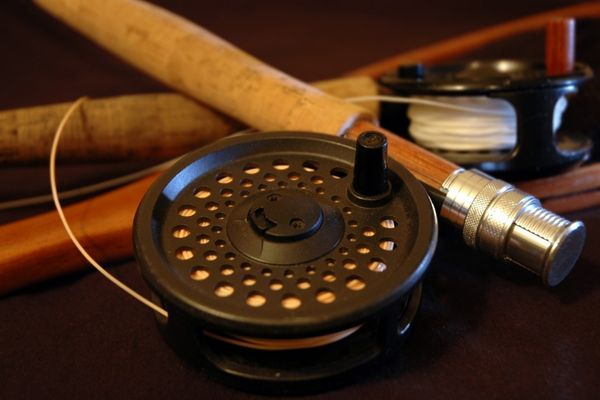Quite a common sentiment is that the fly line is more important than the rod. Hence it is more important to spend more money on the line than on the rod. It is a sentiment I broadly agree with, and have probably even suggested doing exactly that in other articles.
But, at the same time, I think it is not necessarily the best advice. The reason why is based on the expected life span of a product. A fly rod, unless abused can easily last a lifetime, there is nothing that really deteriorates on them that can not be easily replaced.
Fly lines, on the other hand. Even if well cared for are unlikely to last more than a few years. Some lightly used ones might survive for five seasons.
To put it concisely, when someone buys a new fly rod. They are buying a product that is going to last. When someone buys a fly line, they are buying a product that is going to be replaced in a few years. One is a long-term purchase, the other is a short-medium term purchase.
I know there are people out there, who buy new fly rods every time sage releases a new model. So they might replace their rod every two or three years. That is fine but there is absolutely no need to upgrade or replace fly rods on such a regular basis. I see such purchases as more luxury than essentials. Also, anyone who can afford to buy a new rod on a regular basis is not going to have to compromise between a cheap or expensive fly line anyway. So, such people are not really relevant to this topic.
Two budget fly lines are often better than one premium
Another factor that needs to be taken into consideration, is that many fly fishermen do not stick with just one fly line. They will use a different line for streamer fishing, than the one they use for nymphs. Some might even have a dedicated line just for dry flies.
Buying two ‘affordable’ fly lines designed for specific uses will usually outperform one expensive generalist line in their specific roles.
For example, a double taper fly line generally sacrifices some distance, but allows for a gentler presentation, making them well suited for casting dry flies and other finesse presentations.
While a weight forward line is better able to handle heavier flies such as streamers or double nymph rigs. One example is the Scientific Anglers Frequency Boost.
If all you care about is maximizing distance, for example when a streamer fishing a line with an integrated shooting head or very aggressive front taper is hard to bet. One budget friendly example is the Scientific Anglers Frequency Magnum.
Line choice can also influence how a rod reels. Using an even taper line can slow down a fast action rod, while a weight forward line will speed it up.
Cheap fly lines are not necessarily bad
Once upon a time, cheap fly lines were quite nasty. They will stiff, they will coil as they come of the reel and they might start to crack before the end of the first season. They were certainly not quality products.
But, things have changed. Not only have affordable fly lines gotten significantly better, but premium fly lines have also gotten significantly more expensive. So while the gap in quality has narrowed, the gap in price has only grown. There is certainly less bang for the buck.
Take the test results from Trident fly fishing review of 43 weight forward 5ft lines. The best performing line overall in their testing was a Scientific Anglers Frequency boost, a line that retails for $49.95, it outscored multiple fly lines costing twice the price. Now, the Frequency boost is certainly not for every rod, it is quite a heavily weighted line and can overwhelm the action of some slower rods, especially at longer distances, with that said the SA Frequency trout does exist, and it is a very similar line from a quality perspective but it is rated true to weight so typically much better for longer casts on slower rods .
When buying a fly line, what is much more important than price is finding one that compliments the action of your rod at the distances you plan on casting. There does not seem to be much of a correlation between price and performance.
Before wrapping up this section, I also want to take a minute to discuss the Maxcatch Gold, this line is basically a Chinese copy of the Rio Gold and the main difference is that it retails for around $20. Both fly lines are weight forward and feel quite supple straight from the pack. I happily fish both in cold water conditions.
The surprising thing is. When new both fly lines cast and perform very similarly. I can not speak for longevity for the Maxcatch, but Rio Gold are certainly not the most durable fly line on the market either. I suspect the Scientific Anglers MPX will have them both beat from a longevity perspective and probably performs better when temperatures are warmer.

